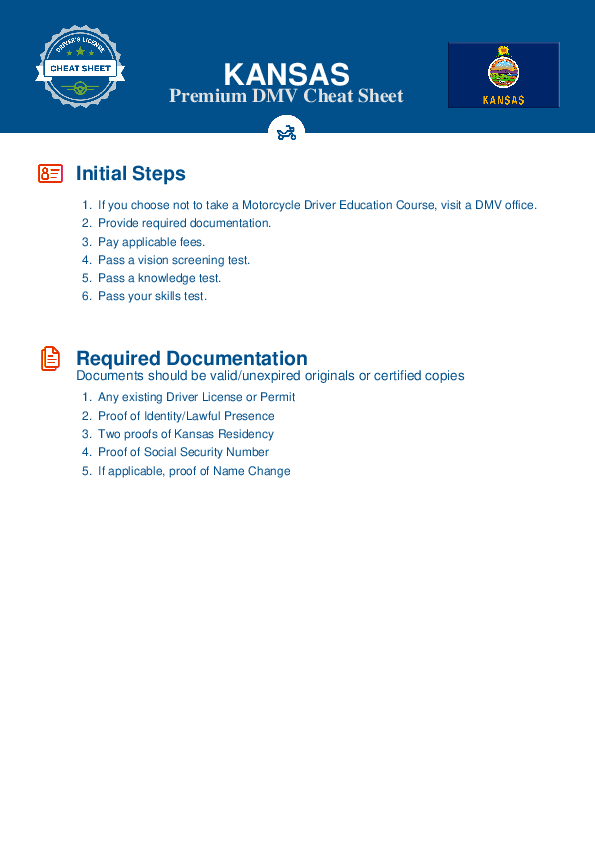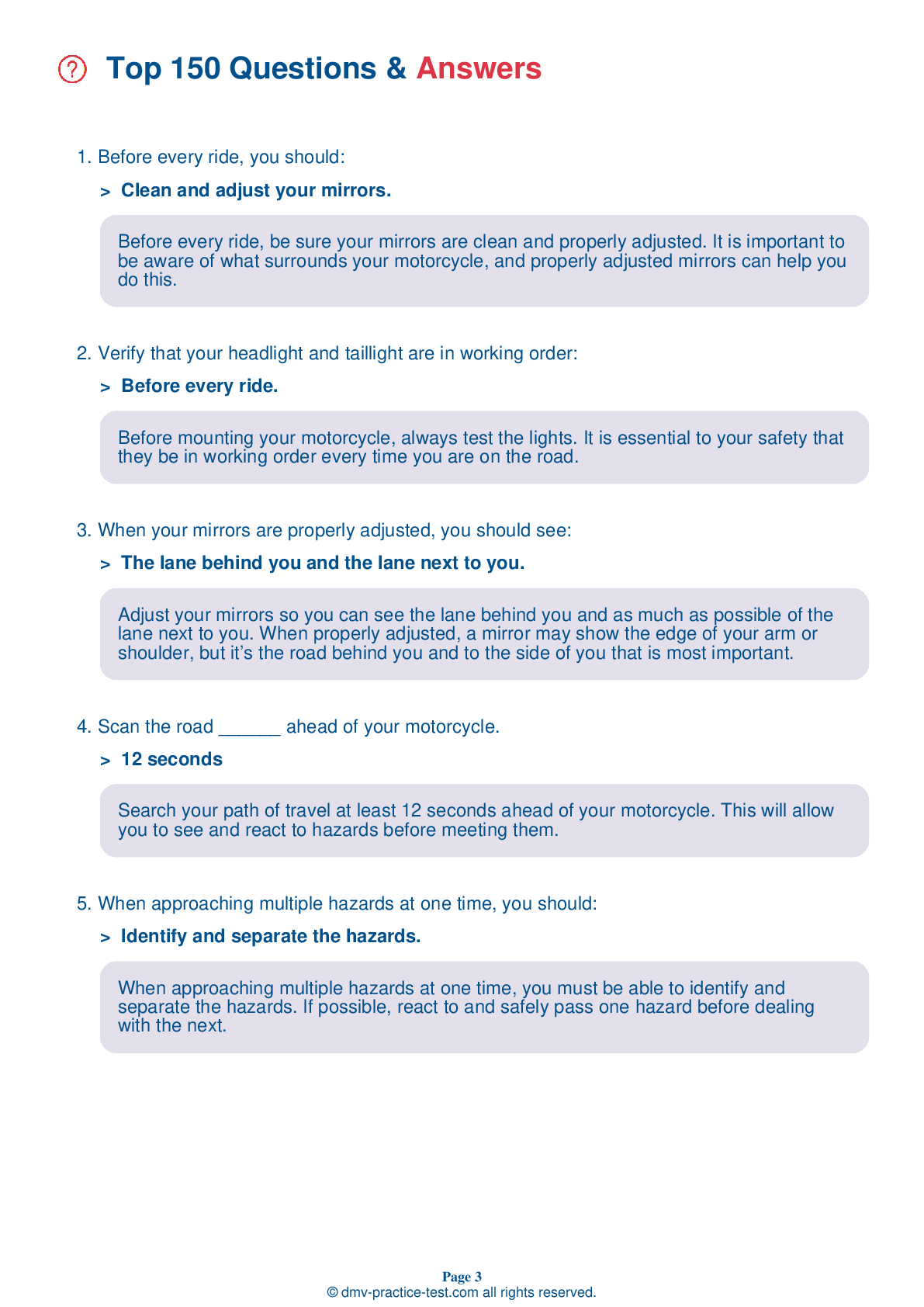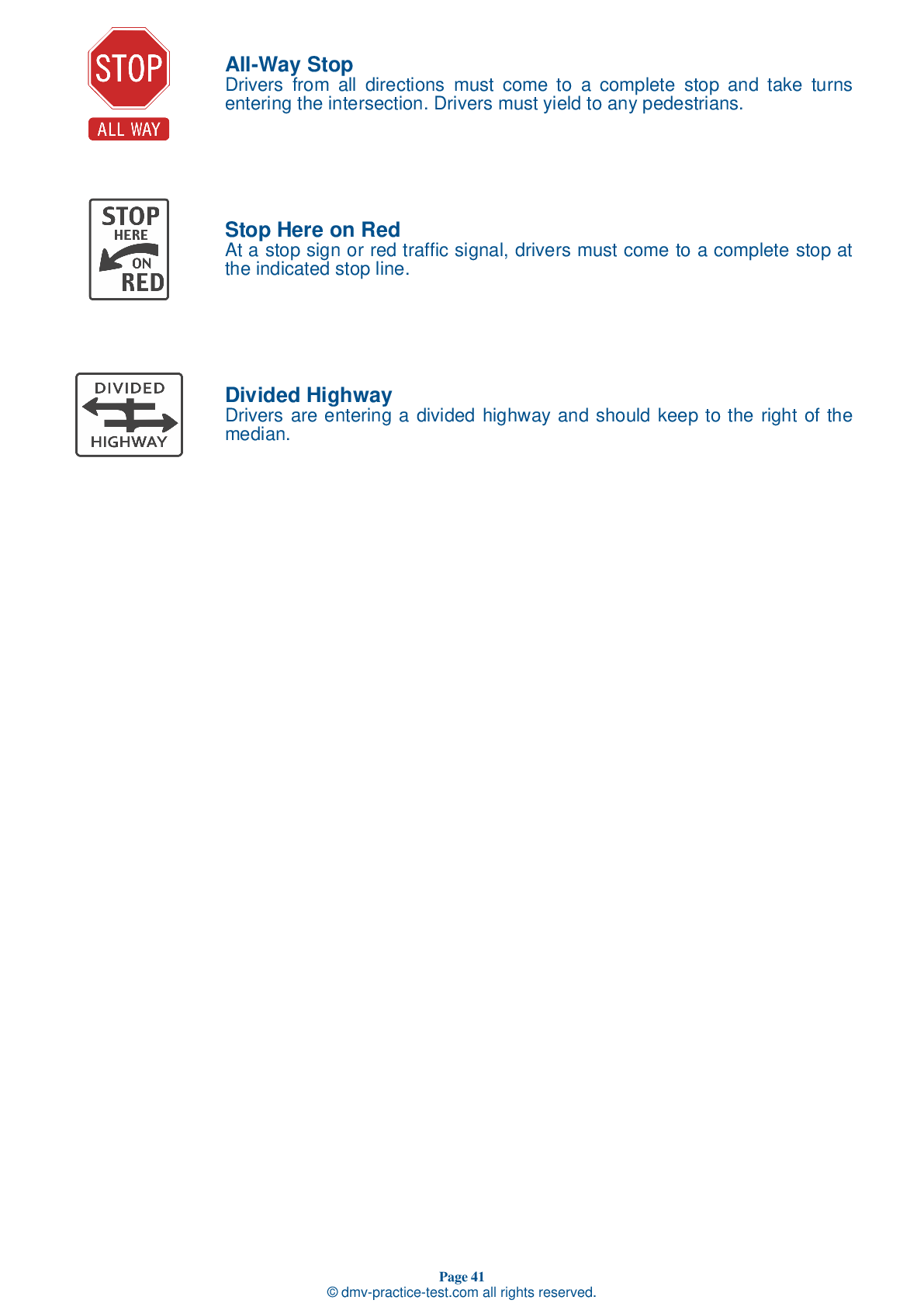Motorcycle Test | License KS 2025 | FREE Online Practice! #9 Page 3 of 4
Take this FREE motorcycle test (license in KS 2025) to check your knowledge of the road rules. To improve your results, download a motorcycle handbook online, study theory, and practice for free on our website. Still worried about how to get a motorcycle license in Kansas in 2025? Check our website for more sample tests, train as much as possible, and boost your grades!
13 . When buying a motorcycle helmet, you should be most concerned about the helmet's:
Protection should be your first consideration when buying a motorcycle helmet.
14 . A benefit of keeping a cushion of space between you and surrounding vehicles is that:
It is important to maintain a cushion of space around your motorcycle at all times. This way, if a hazard arises, you will have more time to respond to the hazard and more space to safely maneuver.
15 . Which of the following surfaces is unlikely to provide poor traction for motorcyclists?
A number of surfaces can provide poor traction for tires. Wet pavement; roads covered in loose gravel or sand; muddy, snowy, or icy areas; painted lane markings; and metal covers and plates in the road can be more hazardous for a motorcyclist than dry pavement.
16 . A plastic, shatter-resistant face shield can protect you from:
A plastic, shatter-resistant face shield can protect your face in the event of a crash. It also provides protection against more routine hazards, such as pebbles thrown up from other vehicles, wind, dust, dirt, rain, and insects.
17 . If you are being passed, you should:
When being passed, the center portion of the lane is generally the safest lane position for a motorcyclist. Riding on the side nearest the passing vehicle increases the risk of colliding with it. Riding on the side farthest from the passing vehicle can also be dangerous because it may prompt the driver to return to your lane before it is safe to do so.
18 . From top to bottom, the following is the proper order for traffic lights:

Warning signs are usually yellow with black markings. They alert you to conditions that are immediately ahead. This sign warns drivers about the presence of traffic signals at an intersection ahead.
See the exact questions that will be on the 2025 Kansas DMV exam.
99.2% of people who use the cheat sheet pass the FIRST TIME
Jeneen was tired of paying $5/gallon. She got herself a scooter that required the motorcycle license. She studyed the motorcycle test cheat sheet and passed her test the next day!
Christopher tells us how he knew nothing prior to obtaining the motorcycle study guide, and he only got one question wrong because he clicked on the wrong answer by mistake.



